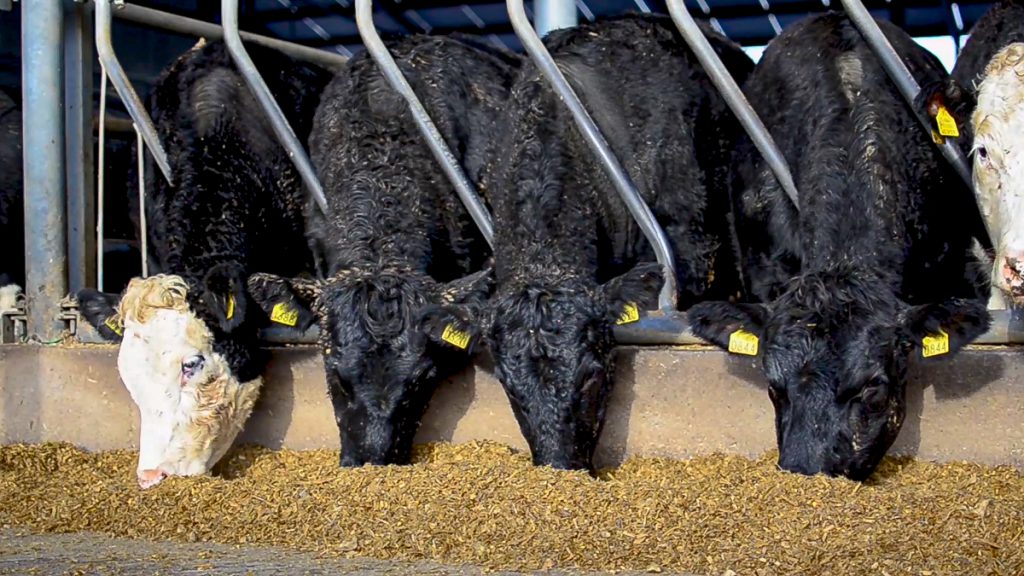Embryo Transfer (ET) work in cattle is something that is more so popular in the breeding of pedigree beef and dairy cattle. Although, there are plenty of commercially bred animals with superior quality that are selected for ET breeding.
It provides the opportunity to increase the numbers of progeny each year from a superior female, than what would normally be achieved through conventional breeding.
Farmers that have been involved in completing ET work will tell you that results can vary from flush to flush.
There are just as many cases of females that provide suitable embryos, as there are females that provide unsuitable embryos or produce eggs that are unfertilised.
Ahead of the special focus piece on ET work coming up this weekend, we take a quick run through of general practice that occurs in ET.
How is embryo transfer completed?
For people that may not be aware, the completing of ET work in cattle involves a specialised practice carried out by experienced practitioners in embryo transfer.
The super ovulation is the result of timed injections of follicle-stimulating hormone (FSH) at the middle or near the end of a normal estrous cycle, while a functional corpus luteum (CL) is on the ovary.
A prostaglandin injection is given during the treatment that will cause CL regression and result in estrus occurring approximately 48 hours later.
During this heat, the female is mated with semen in the hopes of fertilising a number of eggs.
Around the seventh day, post insemination, the eggs are retrieved by the special non-surgical practice of flushing which removes the eggs from the uterus.
Flushing is achieved by placing a rubber catheter in past the cervix and into the uterus. Through a mixture of saline solution, air and gravity, the embryos are passed out of the cow and collected without causing harm to the female.
Grading eggs
The next step is the most nerve-racking one for farmers, as eggs are graded to see if they are suitable for implanting/freezing or not.
If the eggs are suitable, they are either frozen or implanted into a ‘recipient’ female which are mostly heifers but can be cows. If implanting fresh eggs into recipients it should be done as soon as possible after the flush.
To maximise embryo survival in the following transfer, conditions in the recipient reproductive tract should closely resemble those in the donor. This requires synchronisation of the estrous cycles between the donor and the recipients, within one day of each other.
The synchronisation of the recipients can be done in a similar manner and at the same working time as the donor cows.
The success of pregnancy rates can vary and it can depend on the management of the recipient heifer. 
According to Tom R. Troxel, a professor in animal science from the University of Arkansas, conception rates can average from 60-70% with fresh eggs.
Meanwhile, the freezing and thawing process of eggs can reduce the conception rates by 10-20% compared to fresh eggs being implanted – with conception results varying at 50-60%.
Again, there are so many factors that impact these conception rates such as embryo quality, recipient management and technical ability.
Implanting embryos
Implantation is carried out by placing the embryos into straws, similar to what is done with semen, and then through the use of a transfer gun or insemination rod is carefully passed into the vulva and through the cervix.
The tip of the rod is then allowed to slide into the horn on the same side of the ovary with an active corpus luteum.
The embryo is then gently expelled in the forward tip of that uterine horn.
If the eggs are frozen they can be stored similarly to AI straws in a flask of liquid nitrogen. These eggs can be stored for a number of years, with breeders having the option to use them once when they are recipients suitable to implant.
Selling embryos
There is a market for the selling and buying of frozen cattle embryos, especially in the case of pedigree animals.
Prices of embryos can vary depending on the quality of the cow and sires used in the flush.
General valuations have ranged from €150/egg all the way to €1,000/egg. There have been eggs that have sold at higher values due to the crosses being genetically superior.
It can take some time to get proper returns from ET breeding, especially if the herd is trying to expand the number of breeding females. The returns won’t effectively be seen until the female produced from ET begins breeding herself.
ET programmes are not something that will suit every farmer or herd and results can vary greatly. It is a specialised method of breeding that requires a lot of time and effort in order to achieve any sort of success.



